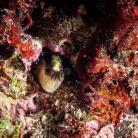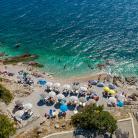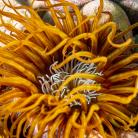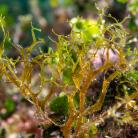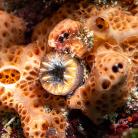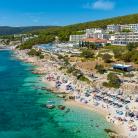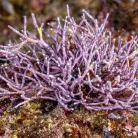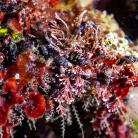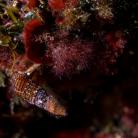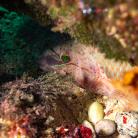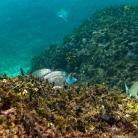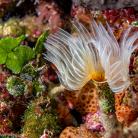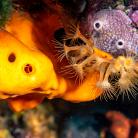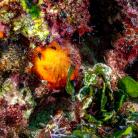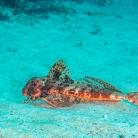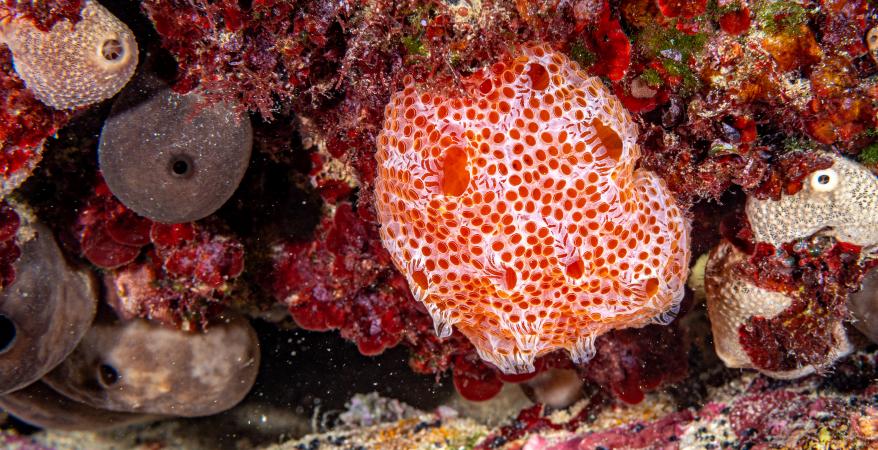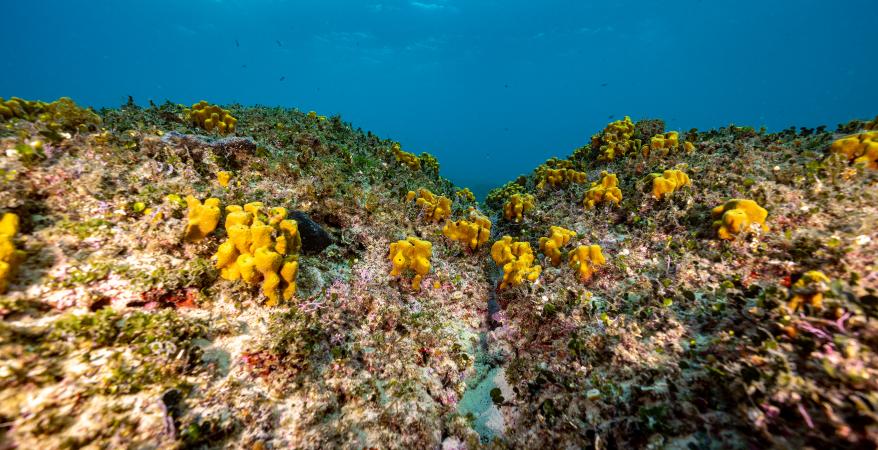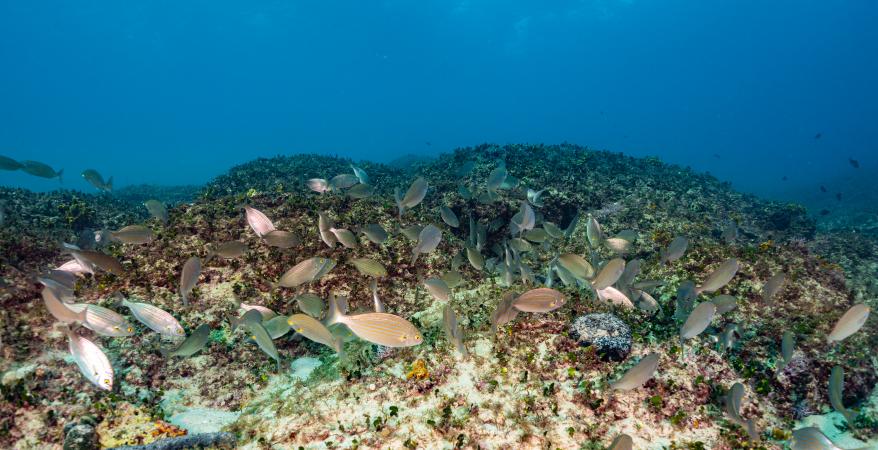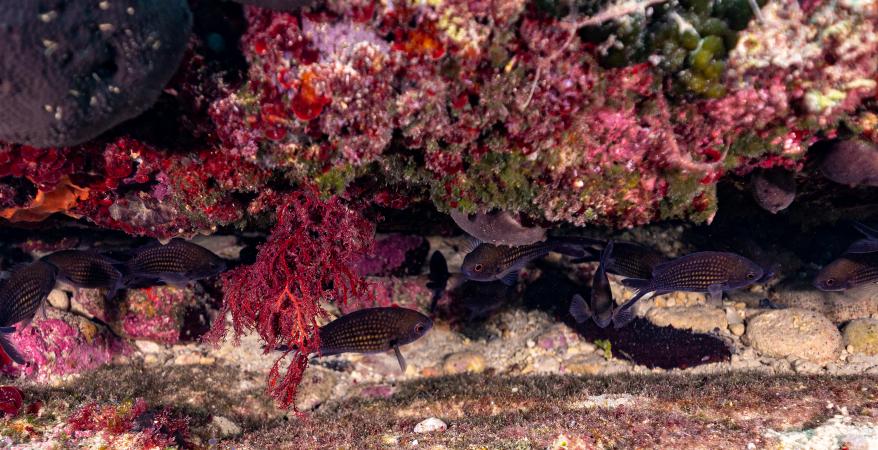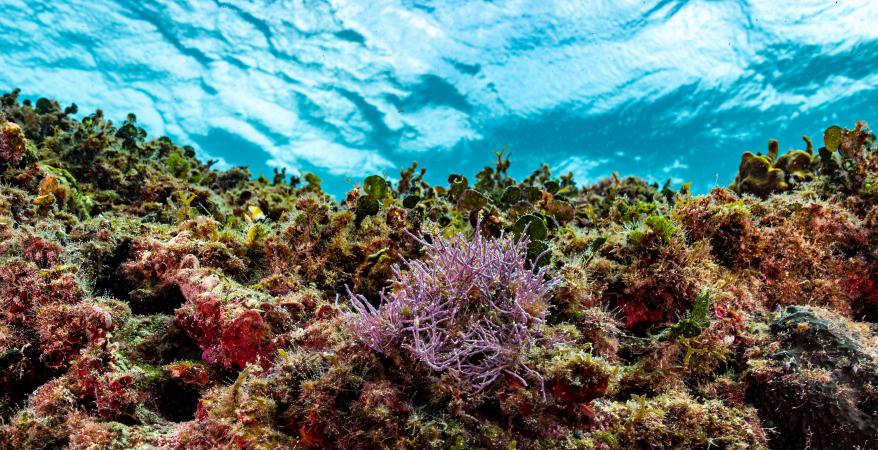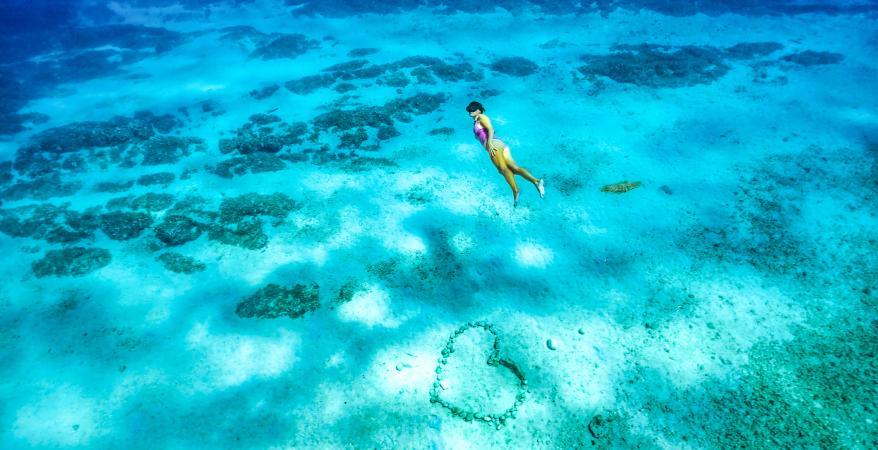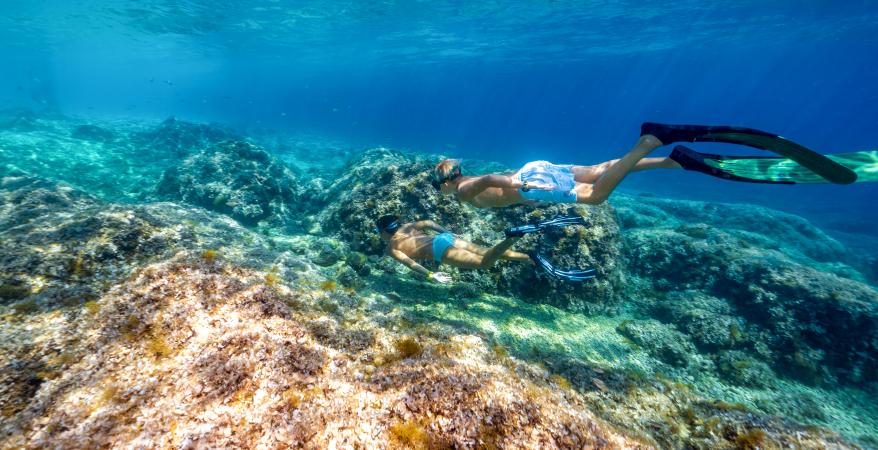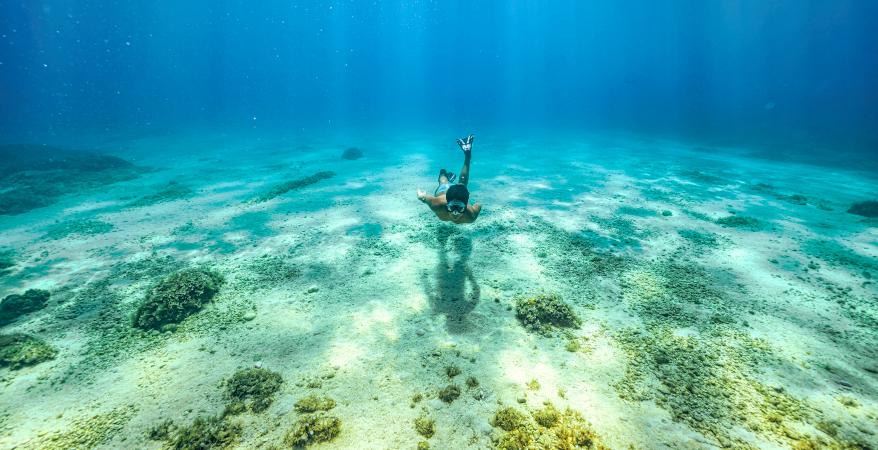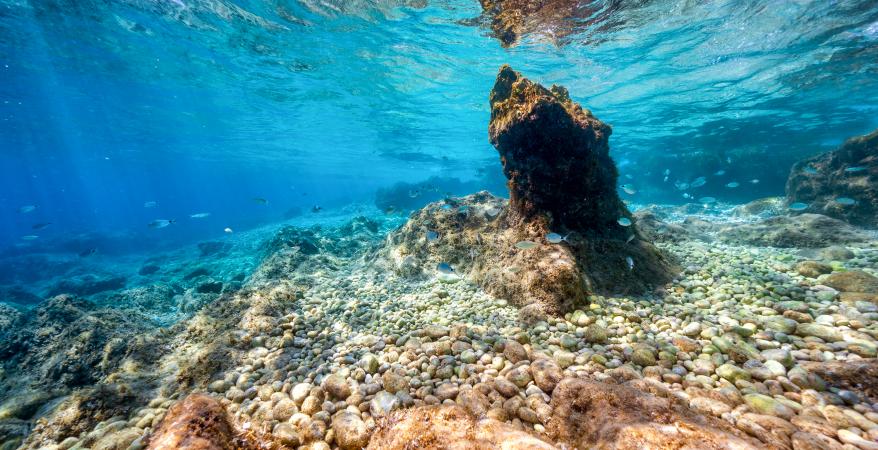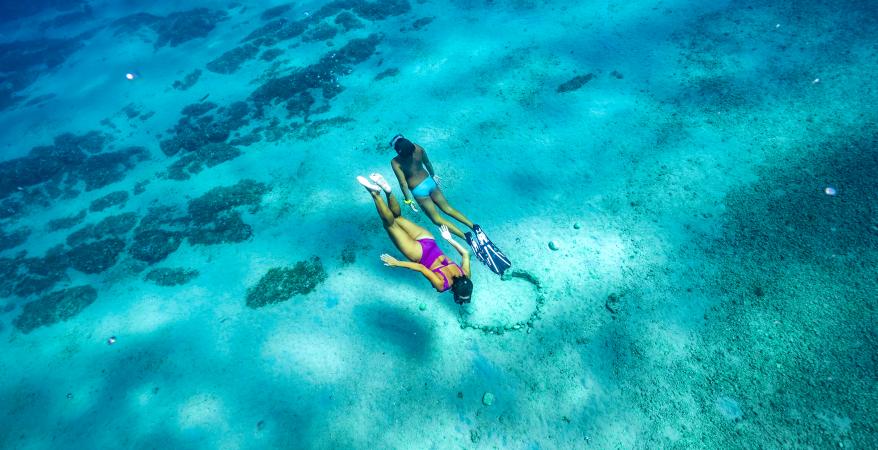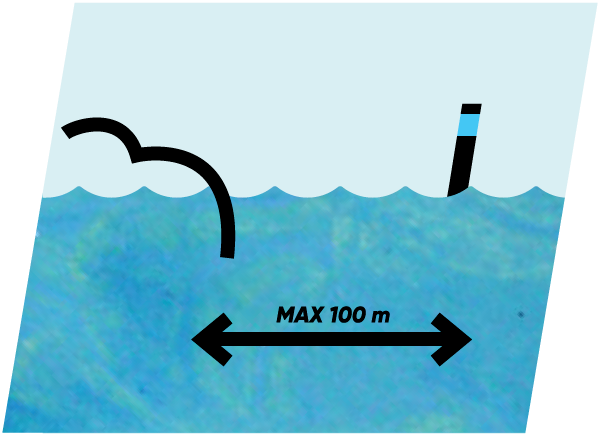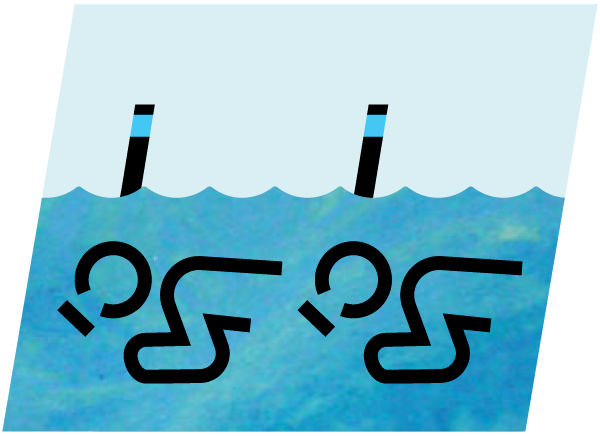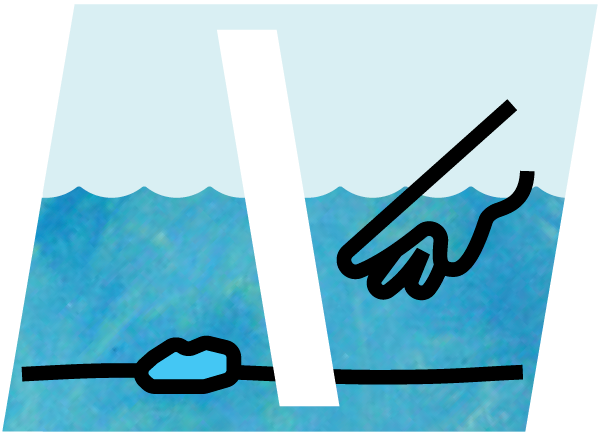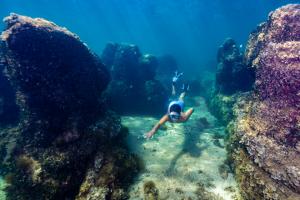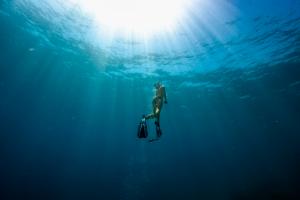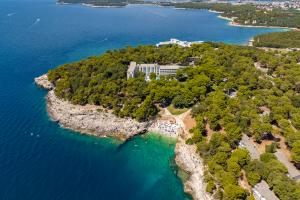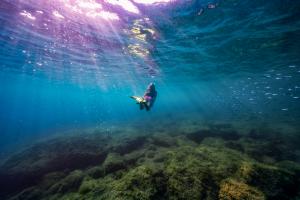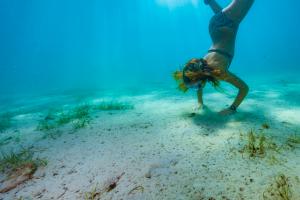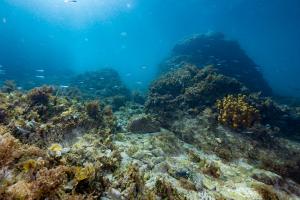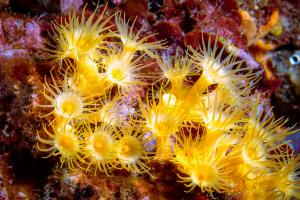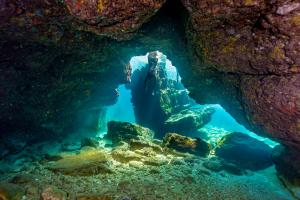Girandella
On the eastern part of the Istrian peninsula, where the shores of almost unreal beauty border the Kvarner Bay, is Rabac, a destination full of surprises. One of them, the Girandella snorkeling location, is located in the namesake resort, at the very end of the coastal promenade.
At the foot of the Girandello Diving Centre there are stairs leading across the sunbathing area to two small gravel beaches. Our snorkeling location is on the beach to the right, if one is facing the sea. There is a magnificent view of the island of Cres from the beach, and somewhat further south in the distance the outline of Osoršćica, a mountain that extends along the northern part of the island of Lošinj.
As soon as you step onto the pebbles, you will notice rocks in front of you that, like an elongated cape, plunge into the turquoise sea. Here is a reef, which in the shallows almost resembles dinosaur vertebrae, and continues into the deep like a long wall intertwined with variegated horizontal crevices. Each notch and crevice are inhabited by sponges of various shapes and decorated with green, brown and red algae.
Depending on the season, the reef takes on a new look. In spring and early summer it is sprinkled with white fan-like, funnel-shaped algae that resemble real flowers (lat. Padina pavonica), while in late summer and autumn it is overgrown by the finer green algae (lat. Halimeda) and pale purple stalks of brittle hair-like appearance (lat. Jania spp.).
On the edges of the rocks grow fluffy pink bushes with white ends resembling carnations (lat. Corallina). The walls in the reef shady crevices are painted with sponges in various shades of green, gray, orange, pink and black. Some look smooth, while others are rough or hairy, often hiding starfish and brittle stars around.
The grooves under the boulders or narrow holes in the rock are lined with red algae that form round scales of a distinct dark red colour, reminiscent of mushrooms (lat. Peyssonnelia rubra). The rocky plateau surrounding the ridge is dotted with longitudinal sandy paths that gently descend to a greater depth.
On the sand one can see shells of a cowry, a rare and strictly protected sea snail. A cowry shell is oval with a very narrow serrated opening and a smooth, porcelain gloss. It is brown with two lighter transverse stripes, and a darker spot on each side of the shell’s edge.
The reef is slightly higher than the surrounding bottom, so it is regularly grazed by large shoals of dreamfish that you will easily recognize by the golden yellow longitudinal stripes and a yellow eye. It is visited in passing and in a hurry by shoals of mullets that appear to be made of silver. Permanent inhabitants of Girandella are sheephead breams, sea breams, sea basses as well as smaller fish such as damselfish, the painted comber, the Mediterranean rainbow wrasse and the saddled seabream.
This snorkeling location is particularly interesting for offering the view of the European conger at a very small depth of 3 meters, living peacefully in its hole, which it often shares with small transparent-pink prawns. The European conger is black and snakelike. You can look at it from up close, but do not try to touch it because it has a strong jaw with which it breaks shells and crabs, and can even bite a finger off the reckless!
The sea here is clear and somewhat colder because it borders with the deeper waters of the Kvarner Bay, so constant and sometimes strong currents ensure the exchange and flow of fresh seawater.
Recommendations
If you want to explore the reef crevices, use fins for a more comfortable dive.
As a snorkeling location, Girandella is equally interesting in its shallow and the slightly deeper part, and your exploration choice will depend on your freediving fitness.







